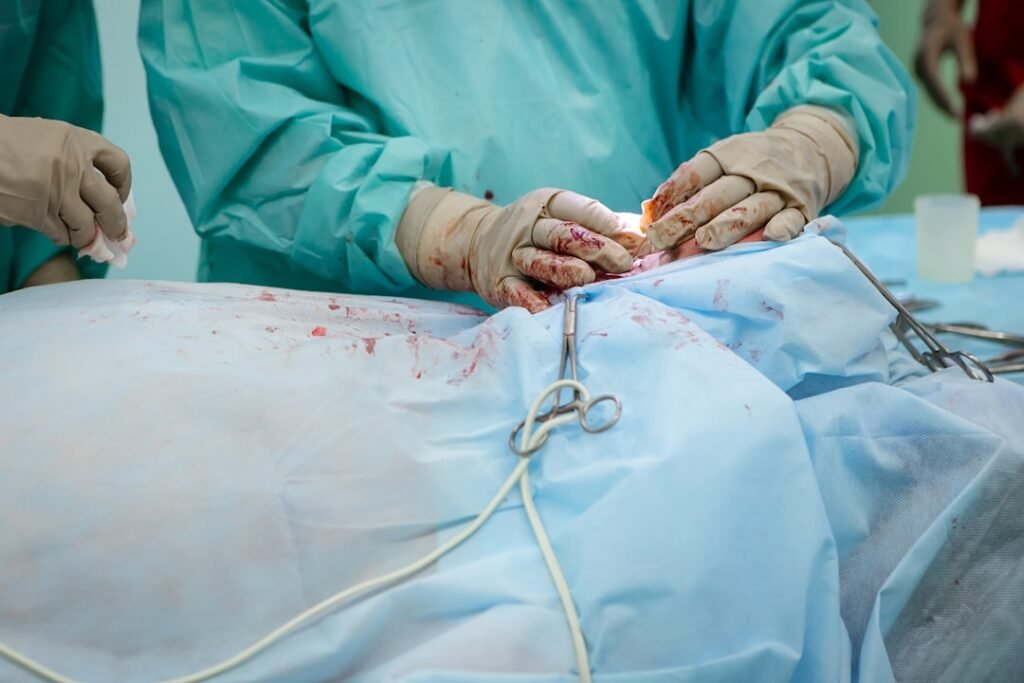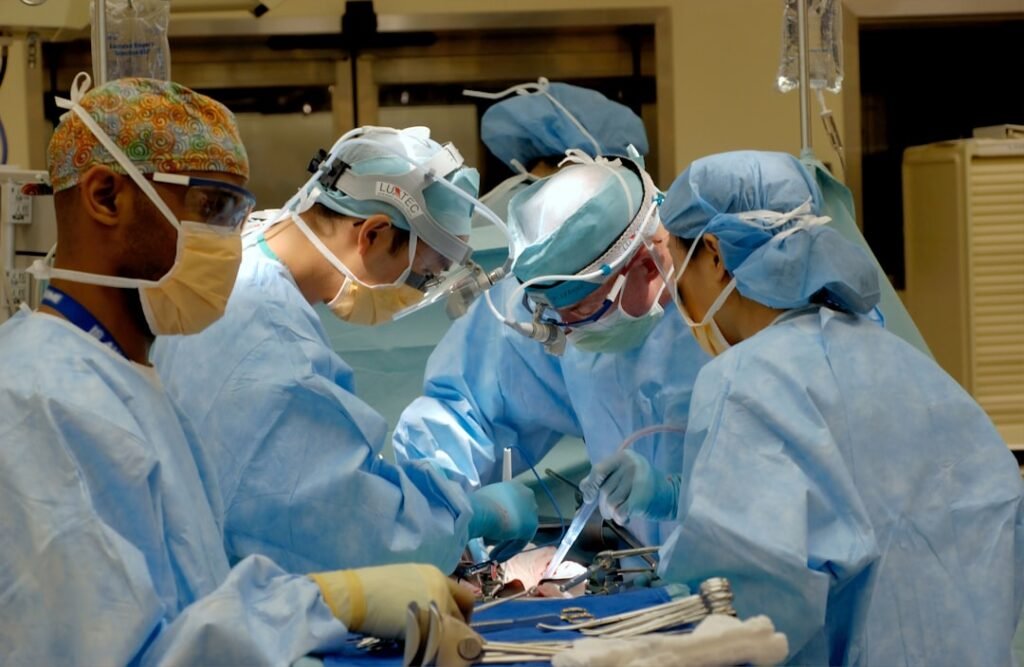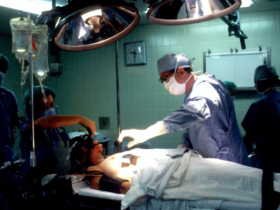Robotic-assisted minimally invasive surgery in cardiology represents a revolutionary approach to cardiac procedures, leveraging advanced robotic systems to enhance precision and patient outcomes significantly. This innovative technique has redefined the standards of heart care by offering improved accuracy and shorter recovery times for individuals undergoing complex cardiac surgeries. For example, in minimally invasive mitral valve repairs, robotic technology enables surgeons to navigate intricate repairs with unparalleled precision, leading to optimal patient outcomes and reduced post-operative complications. The application of robotic assistance in cardiology has not only transformed surgical precision but has also significantly reduced recovery times, allowing patients to resume their daily activities sooner post-surgery.
Furthermore, the integration of robotic systems in cardiology procedures has revolutionised the field by enhancing patient safety and minimising the risks associated with traditional open-heart surgeries. By providing surgeons with advanced 3D HD camera visualisation, robotic technology enables precise control and accuracy during intricate cardiac procedures. This level of precision is crucial in ensuring successful outcomes in procedures such as coronary artery bypass grafting, where the precise navigation of blocked arteries is paramount for patient recovery. Patients undergoing robotic-assisted minimally invasive surgery often experience less scarring, reduced pain, and faster recovery post-operation, underscoring the transformative impact of robotic technology on the overall patient experience.
In addition to the advantages mentioned, the application of robotic-assisted surgery in cardiology has led to a paradigm shift in the field, with a focus on enhancing patient outcomes and improving overall quality of care. By significantly reducing blood loss during procedures due to the minimally invasive nature of robotic-assisted surgeries, patients benefit from reduced transfusions and related complications, ultimately leading to smoother recovery trajectories. The precision and accuracy offered by robotic systems not only contribute to improved surgical outcomes but also minimise the risk of complications during and post-operation, amplifying the safety and efficacy of cardiac procedures. Through the seamless integration of robotic technology, cardiology specialists have been able to elevate the standards of heart care, offering patients a new era of surgical precision and enhanced recovery processes.
Advantages of Robotic-Assisted Surgery
The advantages of robotic-assisted surgery in cardiology extend beyond precision to encompass various elements that significantly impact patient care and outcomes. One of the key benefits of robotic systems is the provision of advanced 3D HD camera visualisation for surgeons, allowing for enhanced precision and accuracy during complex procedures. This high-definition visualisation enables surgeons to navigate intricate cardiac structures with greater detail and clarity, ultimately leading to improved surgical outcomes and patient safety. For instance, in cardiac tissue ablation for arrhythmias, the advanced visualisation offered by robotic systems enhances the precision and effectiveness of the procedure, reducing the risk of complications and improving patient recovery rates.
Moreover, the minimally invasive nature of robotic-assisted surgeries results in reduced blood loss during procedures, offering a significant advantage over traditional open-heart surgeries. Robotic systems utilise smaller incisions, minimising blood loss and decreasing the need for transfusions, contributing to improved patient outcomes and quicker recovery times post-operation. Patients undergoing robotic-assisted surgeries in cardiology often experience less physiological stress, leading to a smoother recovery process and shorter hospital stays. Additionally, the post-operative benefits for patients extend to reduced scarring, minimal pain, and trauma, offering a more positive surgical experience and faster recovery. This reduction in post-operative discomfort and complications underscores the transformative impact of robotic technology on patient recovery and overall well-being in cardiac surgeries.
Furthermore, the precise control and accuracy provided by robotic systems have a direct impact on patient outcomes and the quality of care delivered in cardiology. By reducing the physical strain on surgeons and enhancing their dexterity through advanced robotic instruments, procedures such as minimally invasive mitral valve repairs and coronary artery bypass grafting are performed with heightened precision and efficiency. The seamless integration of robotic technology not only improves surgical outcomes but also contributes to a significant reduction in recovery times, allowing patients to return to their normal activities sooner post-surgery. Patients undergoing robotic-assisted surgeries in cardiology benefit from enhanced safety, reduced recovery times, and an overall improved quality of care, underscoring the pivotal role of robotic technology in transforming heart care.

Specific Procedures Utilising Robotic Technology
Robotic technology plays a pivotal role in a variety of specific procedures within cardiology, offering a new dimension of precision and efficacy in surgical interventions. One notable procedure where robotic assistance excels is minimally invasive mitral valve repairs. By leveraging robotic systems, surgeons can navigate intricate repairs with unparalleled accuracy, leading to improved patient outcomes and reduced post-operative complications. The precision and dexterity provided by robotic technology are particularly crucial in mitral valve surgeries, where even minor errors can have significant implications on patient health and recovery. For instance, specialists such as Pawel Gasior, Jan Harpula, and Tomasz Jadczyk at the Medical University of Silesia and St. Anne’s University Hospital Brno are leading the Interventional Cardiac Electrophysiology Group, advancing innovation and excellence in robotic-assisted surgery.
Moreover, coronary artery bypass grafting procedures also benefit significantly from robotic technology. By utilising robotic assistance, surgeons can achieve enhanced surgical precision when bypassing blocked coronary arteries. This precision translates into better graft patency rates and overall improved cardiac function post-surgery. Patients who undergo these procedures face fewer risks and complications, resulting in shorter hospital stays and quicker recovery times. The integration of robotics in coronary artery bypass grafting exemplifies how technology can revolutionise traditional cardiac procedures, offering a safer and more effective alternative for patients with coronary artery disease. Additionally, in cardiac tissue ablation procedures for arrhythmias, the precision and control provided by robotic systems enable surgeons to target specific areas more effectively, resulting in improved patient outcomes and reduced risks of arrhythmia recurrence.
Furthermore, the role of cardiology specialists in overseeing and performing robotic-assisted minimally invasive surgeries is critical to the success of these procedures. Their expertise within the Division of Cardiology and Structural Heart Diseases contributes significantly to the advancement and integration of robotic technology in cardiology practices. For instance, at renowned hospitals like St. Anne’s University Hospital Brno, cardiology specialists are at the forefront of pioneering robotic-assisted surgeries, ensuring that patients receive the highest standard of care and precision during procedures. By collaborating with engineers and other medical professionals, cardiology specialists play a pivotal role in refining robotic techniques specific to cardiology, such as minimally invasive mitral valve repairs and coronary artery bypass grafting, ultimately enhancing patient outcomes and recovery times.
Role of Cardiology Specialists in Robotic Surgery
Cardiology specialists are instrumental in the realm of robotic-assisted minimally invasive surgeries within the Division of Cardiology and Structural Heart Diseases. Their involvement in pioneering robotic procedures ensures that patients benefit from cutting-edge technology and specialised care tailored to cardiac needs. For example, experts like Pawel Gasior, Jan Harpula, and Tomasz Jadczyk at the Medical University of Silesia and St. Anne’s University Hospital Brno are actively engaged in the Interventional Cardiac Electrophysiology Group, driving innovation and excellence in robotic-assisted surgery. Cardiology specialists not only perform surgeries but also play a crucial role in developing and refining robotic techniques specific to cardiology, such as minimally invasive mitral valve repairs and coronary artery bypass grafting.
Moreover, the collaboration between cardiology specialists and robotic engineers is essential in advancing the field of robotic surgery in cardiology. By combining medical expertise with technological innovations, these professionals ensure that robotic systems are optimised for cardiac procedures, leading to improved patient outcomes and enhanced recovery times. At renowned institutions like St. Anne’s University Hospital Brno, cardiology specialists are at the forefront of integrating robotic technology into cardiology practices, setting new standards for surgical precision and patient care. The expertise of cardiology specialists, combined with the capabilities of robotic systems, paves the way for safer, more efficient cardiac surgeries that prioritise patient well-being and optimal outcomes.
Da Vinci Single Port (SP) Robotic System Features
The da Vinci Single Port (SP) robotic system marks a major leap forward in robotic-assisted surgical technology, especially within the realm of cardiology. This innovative system enables highly skilled surgeons to perform complex surgeries through a single incision that is smaller than 3cm, showcasing the remarkable progress in minimally invasive techniques. One notable feature of the da Vinci SP system is its incorporation of wristed instruments and a 3D HD camera, providing unparalleled precision and control during surgical interventions. This level of technological sophistication not only elevates the accuracy of procedures but also contributes to a heightened sense of safety for patients undergoing robotic-assisted surgeries in cardiology.
The da Vinci SP system has been instrumental in transforming the landscape of minimally invasive cardiac surgeries by offering an unparalleled level of surgical precision. Surgeons utilising this robotic system can navigate the delicate structures of the heart with enhanced dexterity and accuracy, ensuring optimal outcomes for patients requiring complex cardiac interventions. For example, in procedures like cardiac tissue ablation for arrhythmias, the precise control and visualisation provided by the da Vinci SP system enable surgeons to target specific areas with precision, improving the success rates of the procedures. The introduction of the da Vinci SP system signifies a new era of minimally invasive surgery with a focus on patient safety and experience, setting new standards for cardiac procedures and enhancing patient outcomes.
Moreover, the da Vinci SP system’s specialised wristed instruments and advanced imaging capabilities offer surgeons a comprehensive view of the surgical site, enabling them to perform intricate procedures with enhanced precision. This level of detail and control is particularly beneficial in procedures such as minimally invasive mitral valve repairs, where precision is critical to achieving optimal patient outcomes. By incorporating advanced technologies like the da Vinci SP system into cardiac surgeries, surgeons can navigate complex cardiac structures with greater accuracy, leading to improved surgical success rates and reduced risks of complications. The integration of the da Vinci SP system in cardiology exemplifies the continuous evolution towards safer, more precise, and patient-centric surgical techniques, ultimately reshaping the landscape of heart care.
Various Approaches in Minimally Invasive Cardiac Surgery
Minimally invasive cardiac surgery encompasses a variety of approaches that have revolutionised traditional surgical practices, offering innovative techniques that improve patient outcomes and recovery times. One prominent method involves partial sternotomy, which allows surgeons to access the heart through a smaller incision, reducing trauma and promoting faster recovery times. Similarly, mini-thoracotomies have gained popularity for procedures like mitral valve repair, showcasing the versatility of minimally invasive techniques in addressing specific cardiac conditions with precision and efficiency. These minimally invasive approaches have significantly transformed the field of cardiac surgery, offering patients safer alternatives to traditional open-heart procedures.
Furthermore, in cases where patients present with complex pathologies involving multiple heart valves, modified approaches tailored to individual needs have become paramount. These customised surgical strategies ensure that each patient receives the most appropriate treatment, enhancing the overall success of the procedure and long-term outcomes. For instance, surgeons may employ innovative techniques like peripheral cannulation to establish cardiopulmonary bypass, streamlining surgical processes and minimising the risk of complications. The continual evolution and refinement of minimally invasive cardiac surgery practices underscore the commitment of cardiac surgeons to enhance patient care continually, offering patients safer, more effective alternatives to traditional open-heart procedures.
Additionally, the evolution of minimally invasive cardiac surgery techniques has led to advancements in surgical procedures and myocardial protection strategies. By aligning with conventional cardiac surgery practices while introducing technical differences, minimally invasive approaches aim to deliver the same surgical procedures with less trauma and improved patient outcomes. For example, the use of peripheral cannulation for establishing cardiopulmonary bypass accelerates operations and reduces complications in minimally invasive procedures, highlighting the innovative solutions that have emerged in cardiac surgery. These advancements in minimally invasive techniques underscore the commitment of cardiac surgeons to continually refine and enhance patient care, offering individuals a safer and more efficient approach to cardiac procedures.
Market Trends and Growth in Robotic Surgery
The field of robotic surgery has experienced significant growth, with the global market value reaching $8.6 billion in 2022. This substantial figure highlights the increasing adoption of robotic technology in various surgical procedures, including those in the realm of cardiology. The surge in market value underscores the escalating acceptance and recognition of the benefits that robotic-assisted surgeries offer to both patients and medical professionals. Looking ahead, the future of robotic surgery appears promising, with projections estimating that the surgical robotics market will expand significantly to $15.8 billion by the year 2030. This anticipated growth trajectory signifies a doubling of market value, illustrating the escalating demand and confidence in the capabilities of robotic systems in healthcare settings.
Moreover, the advancements in robotic surgery have paved the way for innovative practices such as remote telesurgery, allowing experienced surgeons to operate from a distance and improve access to specialised medical treatment. These groundbreaking approaches leverage the precision and efficiency of robotic systems to enhance patient care and surgical outcomes, especially in complex cardiac procedures. The integration of robotic technology in procedures like mitral valve repairs and coronary artery bypass grafting has revolutionised traditional surgical practices, offering patients safer alternatives and improved success rates. As technology continues to advance, there is a strong focus on enhancing robotic procedures through innovations like improved haptic feedback mechanisms and the integration of artificial intelligence, aiming to further refine the precision, efficiency, and outcomes of robotic-assisted surgeries in cardiology.
Cedars-Sinai’s Leading Role in Robotic and Minimally Invasive Cardiac Surgery
The Smidt Heart Institute at Cedars-Sinai has been at the forefront of advancing robotic and minimally invasive cardiac surgeries, setting a high standard in the field. Through their innovative practices, which include making small incisions between the ribs for surgical access, the institute has significantly improved patient outcomes and comfort levels. For example, patients undergoing minimally invasive procedures at Cedars-Sinai have reported reduced post-operative pain and a quicker return to their daily activities compared to traditional open-heart surgeries. The emphasis on minimally invasive techniques not only accelerates the recovery process but also reduces the overall stress on patients’ bodies during surgery, aligning with the institute’s patient-centric care philosophy.
Moreover, the Smidt Heart Institute’s commitment to utilising cutting-edge robotic technologies has enhanced the precision and efficacy of cardiac surgeries. By incorporating robotic assistance, surgeons at Cedars-Sinai can perform complex procedures with greater accuracy and a minimised risk of complications. An excellent example of this is the use of robotic systems in mitral valve repairs, where the intricate nature of the surgery requires precision beyond the capabilities of traditional methods. The implementation of robotic technology in such procedures has resulted in improved patient outcomes and a higher success rate in repairing heart valves. Patients who have undergone robotic-assisted minimally invasive surgeries at Cedars-Sinai have reported higher satisfaction levels and a sense of reassurance due to the advanced technologies and expertise employed by the medical team.
Furthermore, the emphasis on patient outcomes and comfort at Cedars-Sinai underscores the institution’s commitment to delivering high-quality cardiac care through innovative surgical practices. By integrating robotic technology into minimally invasive cardiac surgeries, the Smidt Heart Institute has set a benchmark for excellence in patient care and surgical precision. The collaborative efforts of cardiac specialists, robotic engineers, and medical professionals at Cedars-Sinai exemplify a multidisciplinary approach to cardiac surgeries, focusing on patient well-being and optimal outcomes. Patients undergoing robotic-assisted minimally invasive surgeries at Cedars-Sinai benefit from advanced technologies, expert medical care, and a patient-centric approach that prioritises their comfort and recovery.

Patient Outcomes and Recovery in Robotic Surgery
Patients undergoing robotic-assisted surgeries in cardiology have consistently demonstrated remarkable outcomes compared to traditional surgical methods. Studies have shown that these patients experience significantly faster recovery times, allowing them to return to their daily activities sooner. The precision and accuracy of robotic systems play a vital role in enhancing patient outcomes in cardiology. By providing surgeons with 3D HD camera visualisation and highly controlled robotic instruments, the technology ensures that procedures are carried out with meticulous detail. This precise control not only leads to improved surgical outcomes but also minimises the risk of complications during and after the operation. Patients benefit from reduced blood loss during procedures, decreasing the likelihood of transfusions and related complications, ultimately resulting in better recovery trajectories.
The reduction in post-operative discomfort and complications underscores the transformative impact of robotic technology on patient recovery and overall well-being in cardiac surgeries. Patients undergoing robotic-assisted surgeries in cardiology not only experience faster recovery times but also report reduced post-operative pain and scarring, leading to an overall improved surgical experience. The combination of advanced technology and skilled surgical expertise in robotic-assisted minimally invasive surgery has revolutionised the landscape of cardiac care, offering patients safer procedures, faster recovery times, and improved quality of care. By prioritising patient outcomes and comfort, robotic technology has become an indispensable tool in modern cardiology practices, reshaping surgical approaches and enhancing the overall quality of care provided to individuals with cardiac conditions.
Future Developments and Innovations in Robotic Surgery
Research and development in the field of robotic surgery are continuously evolving to enhance the precision and efficiency of surgical procedures. One significant area of focus is the integration of advanced haptic feedback systems and artificial intelligence into robotic surgical platforms. These innovations aim to provide surgeons with tactile sensations and real-time data feedback during operations, allowing for enhanced dexterity and accuracy in delicate cardiac procedures. For instance, the incorporation of haptic feedback can simulate the sense of touch, enabling surgeons to better navigate complex anatomical structures with robotic instruments. Moreover, plans to expand the application of robotic technology, such as the da Vinci SP system, to other medical specialties beyond urology, hold the promise of delivering superior patient outcomes, shorter recovery times, and an overall improvement in the quality of surgical care.
The continuous advancements in robotic surgical technology are paving the way for innovative practices that enhance patient safety and surgical precision. By incorporating cutting-edge technologies like improved haptic feedback and artificial intelligence, robotic systems are becoming increasingly sophisticated and precise, revolutionising the landscape of surgical interventions in cardiology. The collaboration between medical professionals, engineers, and researchers aims to refine robotic procedures and provide patients with safer, more effective treatment modalities. For example, collaborations with medical instrument companies like Alleima focus on improving patient outcomes, facilitating faster recovery, and delivering high-quality surgical care using advanced robotic instruments. The integration of innovative technologies and surgical expertise in robotic-assisted surgeries heralds a new era of cardiac care, where patient safety, precision, and optimal outcomes are at the forefront of surgical practices.
Also read about our post on Neural Interface Technology: The Future of Human-Computer Interaction









































